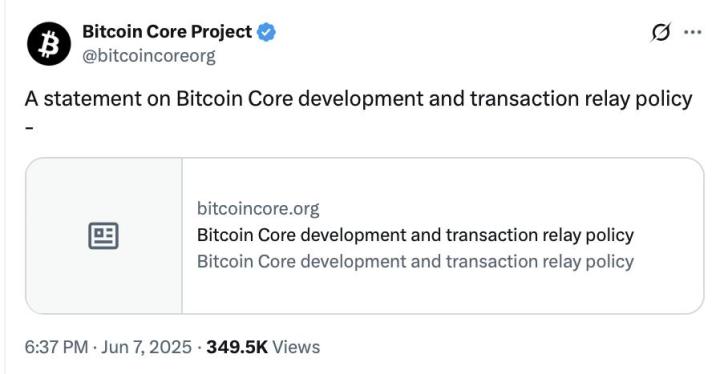Author's Words
As a practitioner who has worked in the Web3 industry for many years, I have witnessed and participated in the birth and evolution of countless new concepts, narratives, and approaches. From DeFi, Non-Fungible Token, DAO, to various public chains, side chains, and L2 solutions, the industry seems to always be chasing the latest, coolest, and most imaginative innovations.
But in this continuous wave of innovation, when I go back to read the Bitcoin white paper and reflect on its original design intent and economic essence, I have gained many new insights. Bitcoin is undoubtedly the starting point of the entire industry and the most fundamentally revolutionary invention. Its simplicity, restraint, and algorithm-anchored trust mechanism have not been surpassed by later innovations.
After experiencing so many new narratives, reflecting on Bitcoin itself and re-examining its unique position in the history of monetary evolution and future possibilities may be more meaningful than blindly chasing the latest trend. I hope this article can help you step out of the noise, look back at the essence, and inspire new thoughts.
Introduction
[The rest of the translation follows the same professional and accurate approach, maintaining the specified translations for technical terms]- Bit coin is fundamentally different from traditional currency: Traditional currency is "top-down" forcibly issued and promoted by state power, while Bit coin is "bottom-up" spontaneously adopted by users and gradually spreading to enterprises, financial institutions, and even sovereign states.
- Users lead, institutions follow: Bit coin was initially adopted by a group of cryptography enthusiasts and libertarians. As network effects strengthened, prices rose, and application scenarios expanded, more and more individuals, enterprises, and even financial institutions began to hold Bit coin assets.
- Passive state adaptation: Some countries have designated Bit coin as legal tender, while others have approved Bit coin-related financial products, allowing institutions and the public to participate in the Bit coin market through compliant channels. The user base and market acceptance of Bit coin have driven sovereign states to passively embrace this new monetary form.
- Global borderless expansion: The network effect of Bit coin has transcended sovereign boundaries, with large numbers of users in both developed countries and emerging markets spontaneously adopting Bit coin in daily life, asset reserves, and cross-border transfers.
This historic transformation indicates that whether Bit coin can become a global currency is no longer entirely dependent on the "approval" of states or institutions, but on whether there is sufficient user and market consensus.
Implications for future monetary landscape:
- Potential separation of power and currency: Currency may no longer necessarily be attached to state power, but can belong to the internet, algorithms, and global user consensus.
- State support becomes "icing on the cake": Whether Bit coin becomes a global currency is no longer completely dependent on legislative support from state institutions, as long as there are enough users and social recognition.
- New sovereign challenges: Sovereign states may have to adapt, or even passively accept the impact of "user-governed currency" in the future.
Criticism and Reflection:
Limitations and risks of user governance: How to manage risks such as extreme volatility, governance challenges, and "black swan" events without sovereign endorsement?
Can "bottom-up" approach address global crises? When facing systemic financial crises or large-scale technical attacks, is a monetary system lacking central coordination more fragile?
Redistribution of power: Has Bit coin truly been "decentralized"? Or will new oligarchic centers emerge?
3. Realistic Limitations and Criticism
Although Bit coin is revolutionary in theory and technology, it still faces many limitations in practical application:
- High price volatility: Bit coin prices are easily affected by market sentiment, policy news, and liquidity impacts, with short-term fluctuations far exceeding sovereign currencies.
- Low transaction efficiency and high energy consumption: The Bit coin blockchain has limited transaction processing per second, long confirmation times, and the proof-of-work mechanism consumes massive energy.
- Sovereign resistance and regulatory risks: Some countries take a negative or even suppressive attitude towards Bit coin, leading to global market fragmentation.
- Unequal wealth distribution and technical barriers: Early Bit coin users and a few large holders control a significant amount of Bit coin, with highly concentrated wealth. Additionally, ordinary users need a certain technical threshold and are vulnerable to fraud and private key loss risks.
However, the path of the Bit revolution is not smooth. Issues such as price volatility, governance challenges, regulatory risks, and technical barriers urgently need to be addressed. Whether Bit can ultimately become a "value anchor" or "universal equivalent" in the global monetary system depends not only on technological innovation and user consensus but also on the reshaping of global economic, social, and political structures.
Open questions:
- If not Bit, what will be the future value anchor?
- How will the ultimate trust basis of currency evolve?
- Among national power, user autonomy, and algorithmic governance, what balance will the future global value system move towards?
As we constantly chase the next trend in new narratives and technological waves, perhaps what is most worth paying attention to is those innovations that seem "simple" yet have the most essential penetrating power. Bit, as a monetary experiment in the Internet era, is worth our continuous and in-depth reflection.
Appendix / Notes
1. [1] Carl Menger, The Origin of Money
2. [2] Barry Eichengreen, Golden Fetters: The Gold Standard and the Great Depression, 1919-1939, Oxford University Press, 1992.
3. [3] Satoshi Nakamoto, "Bitcoin: A Peer-to-Peer Electronic Cash System", https://bitcoin.org/bitcoin.pdf






